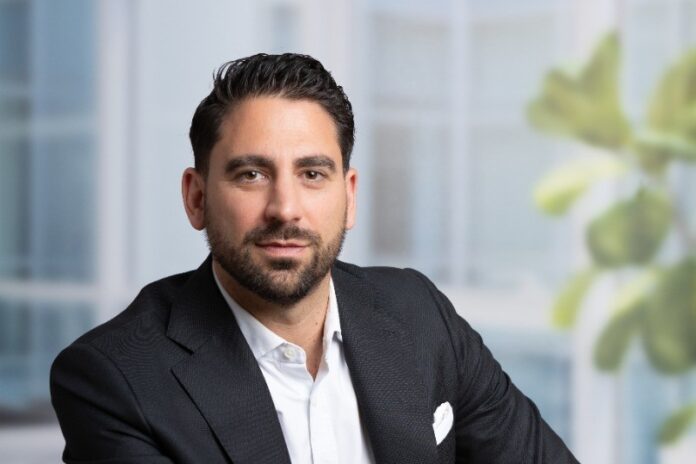French HFT firm Mosaic claimed that market participants lost €75m after Eurex allowed rivals to flood its systems with corrupted ethernet messages ahead of market data, a claim which is denied by Eurex. After its lawsuit was blocked on procedural grounds, Mosaic is escalating its fight to ESMA.
The bleeding edge world of high-frequency trading is being picked over by lawyers as Europe’s biggest derivatives exchange digs in its heels over claims that it allowed rivals to drive Paris-based proprietary trading firm Mosaic Finance to the brink of insolvency. In a December 2024 court document seen by Global Trading, details of the allegations have recently become public.
First reported by Global Trading last month, the case hinges on the practice of ‘speculative triggering’, a form of latency arbitrage where firms send incomplete orders to the exchange that can be rescinded nanoseconds later when new information is received.
The need for speed – Global Trading
Mosaic says some competitors have taken the speculative triggering practice far beyond Eurex’s rulebook by firing millions of malformed ethernet segments every second, over three dedicated order lines. Because the fragments are constructed as headers or pre-ambles rather than full frames, the firm argues, they evade the 30,000-frame-per-second cap set out in Eurex’s Network Access Guide. Mosaic dubs this practice ‘corrupt speculative triggering’ (CST).
By the time legitimate traders react to market-data updates, CST users have already “pre-sent” enough of an order to win a 3.2 nanosecond time advantage, Mosaic claims. The firm tested the tactic over ten sessions in April–May 2024 and says its hit-rate for landing first in the Dax futures book jumped from 7 per cent to 28 per cent. Extrapolated across its strategies, Mosaic puts the annual revenue shortfall at €75 m.
Eurex disputes Mosaic’s claims. While permitting what it calls advanced speculative triggering (AST) as a latency arbitrage strategy, the exchange insists that high-frequency trading firms using AST do not breach its rules, and that it has not detected any irregular activity on its network. Rebuffed by Eurex, Mosaic took legal action, and attempted to involve Eurex’s supervisor, which rather than Germany’s federal regulator Bafin, is the state-level Hessische Börsenaufsicht or Hesse Exchange Supervisory Authority (ESA), which Mosaic claims is a ten-person operation based in Wiesbaden.
In December 2024, the Wiesbaden Administrative Court ruled that Mosaic lacked standing to force the Hesse ESA to intervene, stating that German exchange law tasks the ESA to act “solely in the public interest”, rather than on behalf of an individual firm. Undeterred, Mosaic filed a complaint with the European Securities and Markets Authority (ESMA) on 11 February 2025, warning that CST “may affect confidence in the effectiveness of secondary-market surveillance” and requesting “urgent intervention”. ESMA has acknowledged receipt but declined to comment to Global Trading.
As per the Wiesbaden Administrative Court resolution, Eurex does not dispute that AST is in use. It maintains, however, that participants stay within technical limits because the bytes that precede a frame (preamble/SFD) are not frames and therefore fall outside the 30k-per-second ceiling. Continuous audits, it says, have found no abuse.
“AST is permitted on Eurex provided that the exchange rules are adhered to,” a spokeswoman told Global Trading. “Eurex ensures that all trading participants adhere to the same requirements when using AST, through continuous monitoring as well as random checks of the [Network Access Guide] requirements… In case problems arise or rules are not adhered to, trading participants are asked to make adjustments or connections can be suspended until remedied.”
She added that surveillance relies on hardware and software from Cisco Systems and Arista Networks, and that AST-related activity represents “a minor share of overall traded volumes.” Eurex says it has not been contacted by ESMA or any other authority regarding the matter.
A German securities lawyer contacted by Global Trading said it was unclear whether ESMA would look deeper in the matter to see if CST / AST broke broader market rules.
Several market participants contacted by Global Trading thought the dispute might open the debate over whether state-level supervision can keep pace with nanosecond-scale trading tricks.
Responding to concerns that supervision by an under-resourced state-level authority could undermine confidence in the exchange, a Eurex spokesperson said, “Eurex does not agree that state-level supervision may be perceived as less resourceful compared to federal supervision. Eurex maintains that their compliance and monitoring mechanisms are robust and cooperation and engagement with Hessische Börsenaufsicht works well”.
For now, Europe’s biggest futures market insists its pipelines are clean, its rulebook clear and its watchdogs awake. Mosaic says it will take more than reassurance to restore its faith and P&L in a race where a handful of nanoseconds can decide who wins and who gets washed away.











